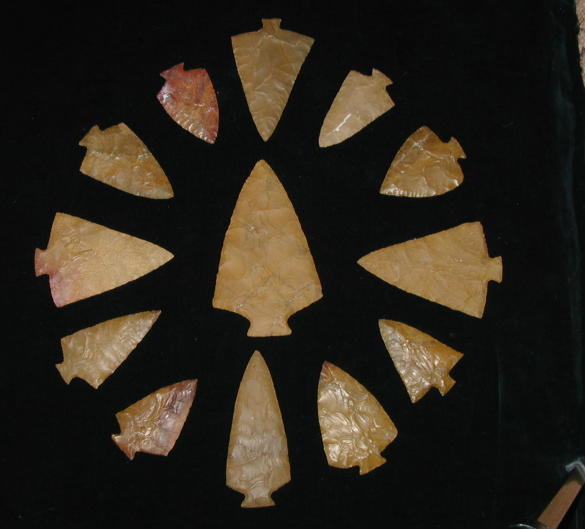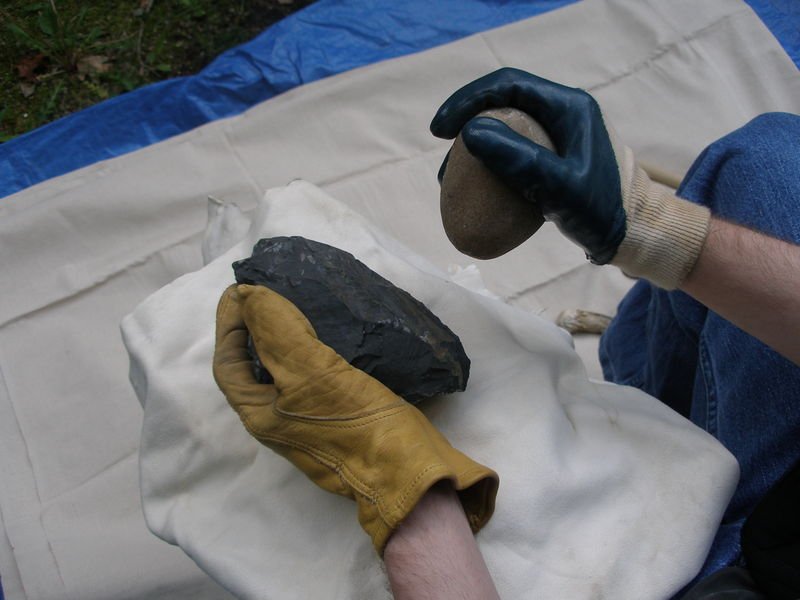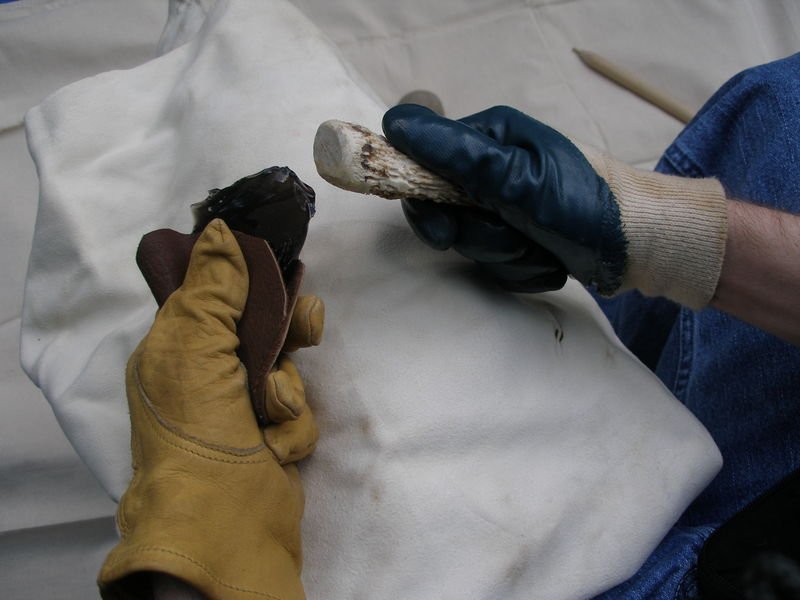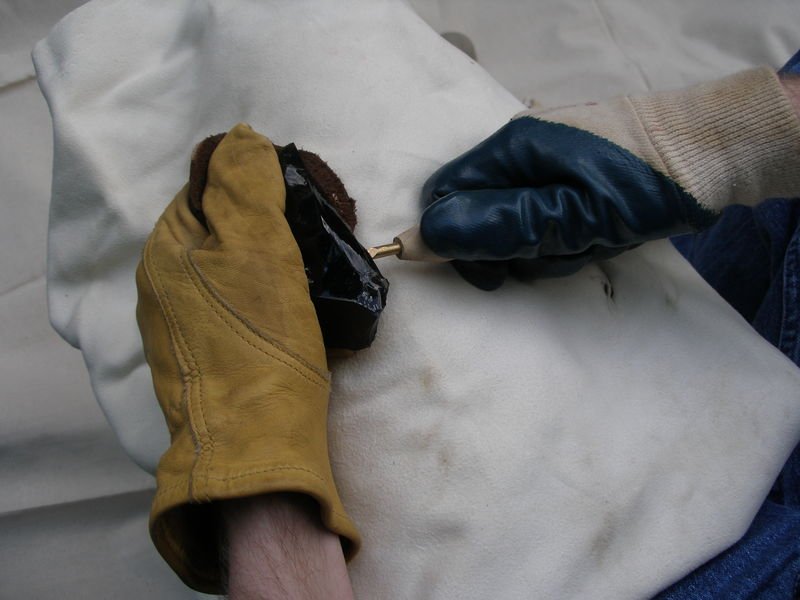A flintknapper is an individual who shapes flint or other stone through the process of knapping or lithic reduction, to manufacture stone tools, strikers for flintlock firearms, or to produce flat-faced stones for building or facing walls.

An example of some beautiful work of Steve Nissly. Look familiar?
Knapping is done in a variety of ways depending on the purpose of the final product. For stone tools and flintlock strikers flint is worked using a fabricator, such as a hammerstone, to remove lithic flakes from a nucleus or lithic core|core of tool stone. Stone tools can then be further refined using wood, bone, and antler tools to perform pressure flaking.
For building work a hammer or pick is used to split flint nodules supported on the lap. Often the flint nodule will be split in half to create two flints with a flat circular face for use in walls constructed of lime. More sophisticated knapping is employed to produce almost perfect cubes which are used as bricks.
In cultures that have not adopted metalworking technologies, the production of stone tools by flintknappers is common, but in modern cultures the making of such tools is the domain of experimental archaeologists and hobbyists. Archaeologists usually undertake the task so that they can better understand how prehistoric stone tools were made.
Flint knapping for the supply of strikers for flintlock firearms was a major industry in flint bearing locations, such as Brandon in Suffolk, England, where flintknappers made strikers for export to the Congo as late as 1947.
Flintknapping for building purposes is still a skill that is practised in the flint bearing regions of Southern England, such as Sussex, Suffolk and Norkolk, and in Northern France, especially Britany and Normandy where there is a resurgence of the craft due to government funding.
For more information on archaeological use, see lithic reduction.
Flint Knapping as a hobby
Modern interest in flintknapping can be traced back to the study of a Native American named Ishi who lived in the early 20th century. Ishi taught scholars and academics traditional methods of making stone tools and how to use them for survival in the wild. In the late 1960s and early 1970s experimental archaeologist Donald Crabtree published texts such as "Experiments in Flintworking". Francois Bordes was an early writer on Old World flintknapping; he experimented with ways to replicate stone tools found across Western Europe. These authors helped to ignite a small craze in flintknapping among archaeologists and prehistorians. Many groups, with members from all walks of life, can be found across the United States and Europe. These organizations continue to demonstrate and teach various ways of shaping stone tools.
Examples of flintknapping tools
There are many different methods of shaping stone into useful tools. The three most simple techniques are mentioned below.
A brief description of the tools and methods used in flintknapping can be found in the lithic reduction page.

An example of hard hammer precussion.
Hard Hammer Precussion
Hard hammer techniques are used to remove large flakes of stone. Early flintknappers and hobbists replicating their methods often use cobbles of very hard stone, such as quartzite. This technique can be used by flintknappers to remove broad flakes that can be made into smaller tools. This method of manufacture is belived to have been used to make some of the earliest stone tools ever found. Some dating from over 2 million years ago.

An example of soft hammer precussion
See: Olduwan tools
Soft Hammer Precussion
Early flintknappers could have used simple hammers made of wood or antler to shape stone tools. Soft hammer techniques are more precise than hard hammer methods of shaping stone. Soft hammer techniques allow a flintknapper to shape a stone into many different kinds of cutting, scraping, and projectile tools.

An example of pressure flaking
Pressure Flaking
Pressure flaking involves removing narrow flakes along the edge of a stone tool. This technique is often used to do detailed thinning and shaping of a stone tool. Pressure flaking involves putting a large amount of force across a region on the edge of the tool and (hopefully) causing a narrow flake to come off of the stone. Modern hobbyists often use pressure flaking tools with a copper or brass tip, but early flintknappers could have used antler tines or a pointed wooden punch. The major advantage of using soft metals is that the metal punches wear down less and are less likely to break under pressure.
External links